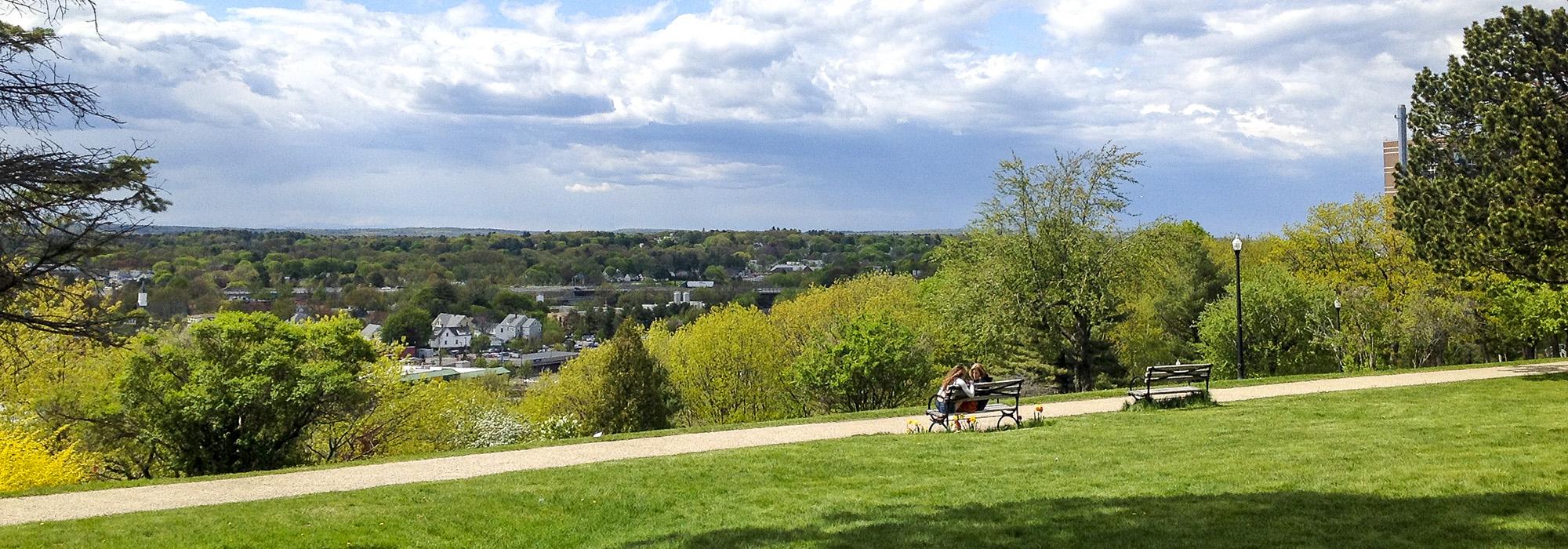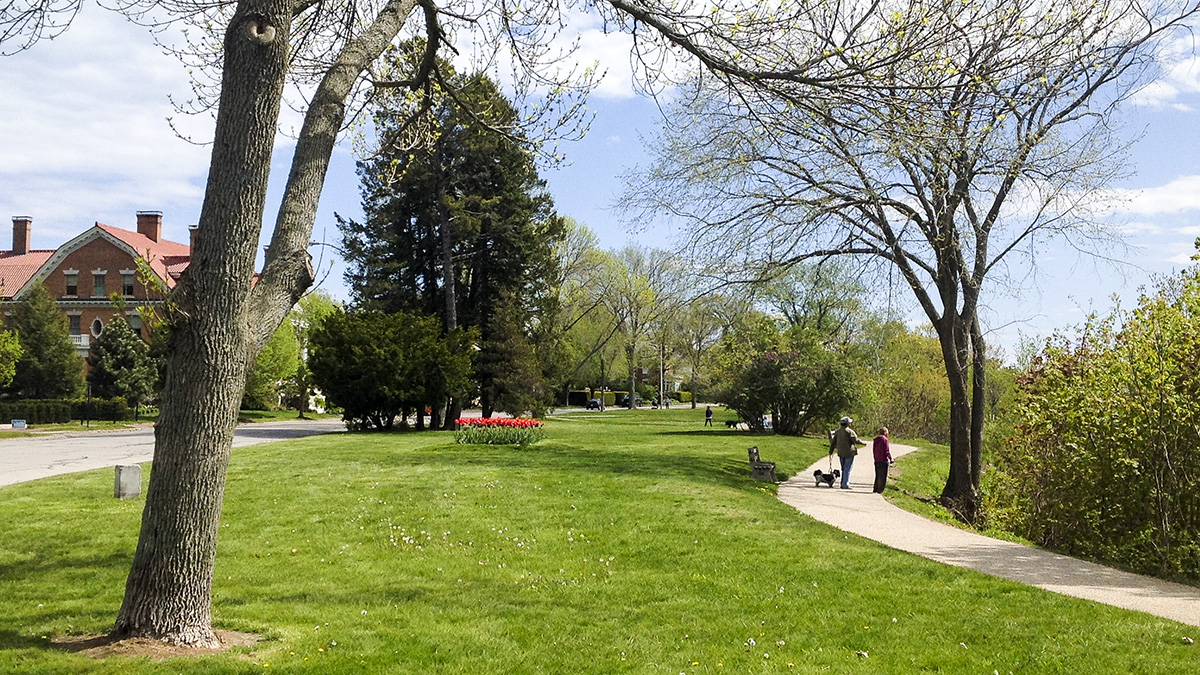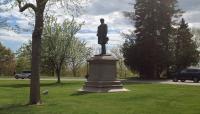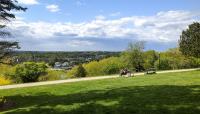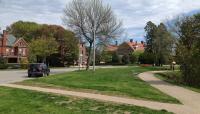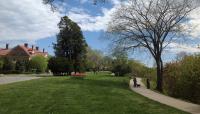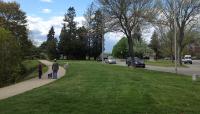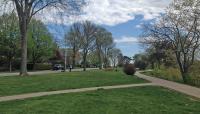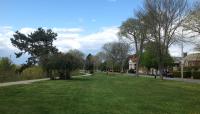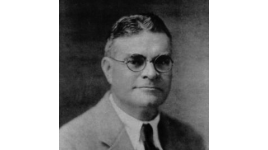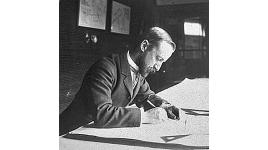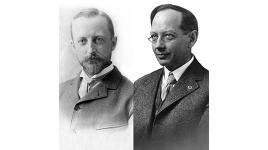Landscape Information
Portland’s officials began buying land for the Eastern and Western Promenades in 1828. The Eastern Promenade provided views of the Casco Bay islands, while the Western Promenade, overlooking the Fore River, had views of the surrounding countryside and the White Mountains. Portland’s civil engineer, William Goodwin, developed the first formal designs for the promenades in 1878. Under Goodwin, the city made yearly improvements to the Western Promenade: widening and grading roads, adding sidewalks, esplanades, elms and maples, a terraced overlook, planting beds, and a gazebo.
In 1905 Mayor James Phinney Baxter hired Olmsted Brothers to design improvements and connections between the Western Promenade and Deering Oaks. The 25-acre Promenade was designed for peaceful strolling and socializing by horse-and-carriage, without structured recreational areas. The firm, led by John Charles Olmsted with Henry Hubbard, proposed curvilinear paths, a formal plaza with a shelter, and a drive crossing a steep slope to connect with Deering Oaks via tree-lined streets. Although this plan was not implemented, today’s strolling paths, lawns, and allées resemble the Olmsted Brothers intent. The now heavily-wooded slope has been cleared in selected places to reinstate historic views of the Fore River and White Mountains. The park was listed in the National Register of Historic Places in 1989.



